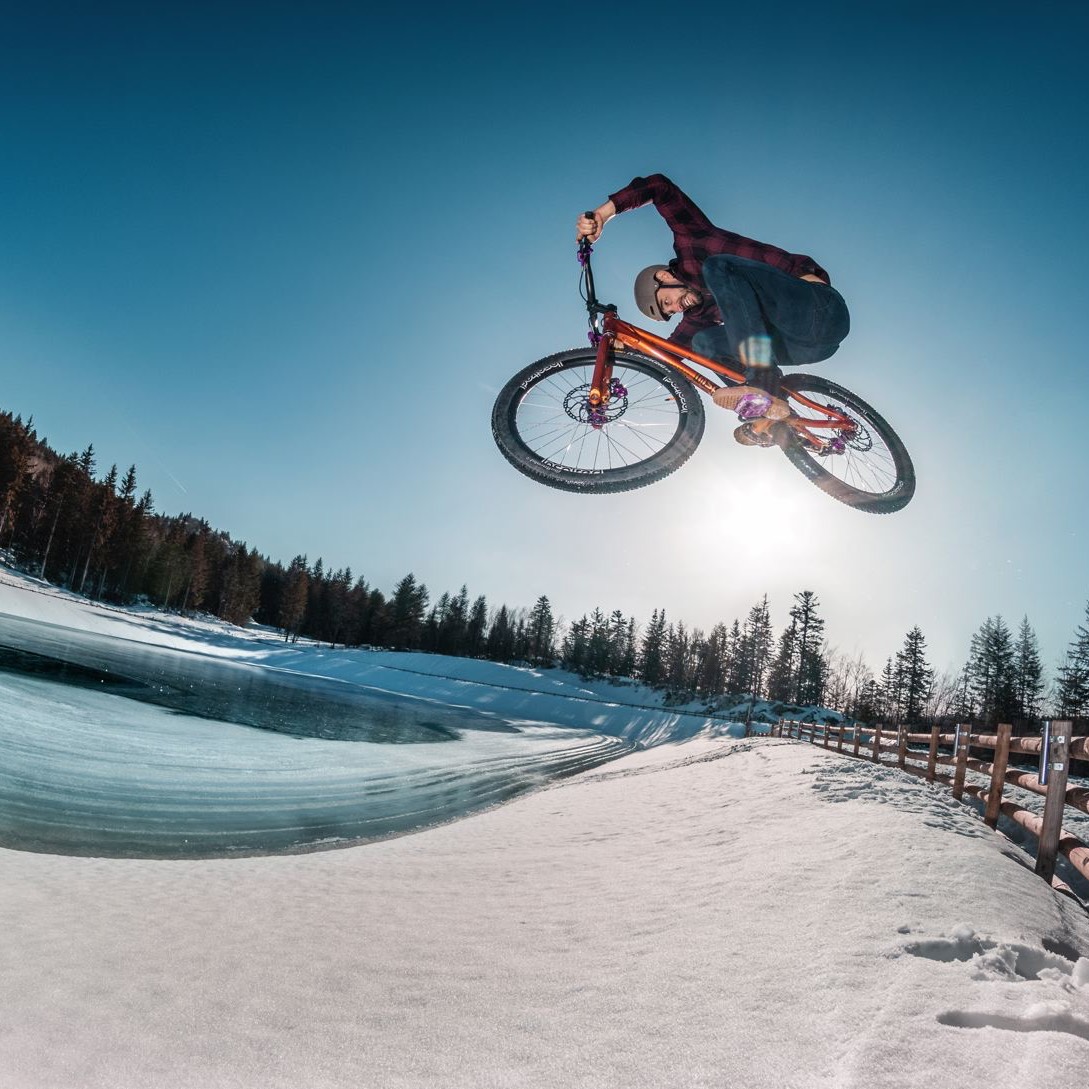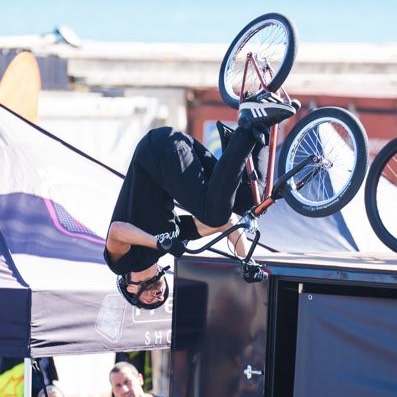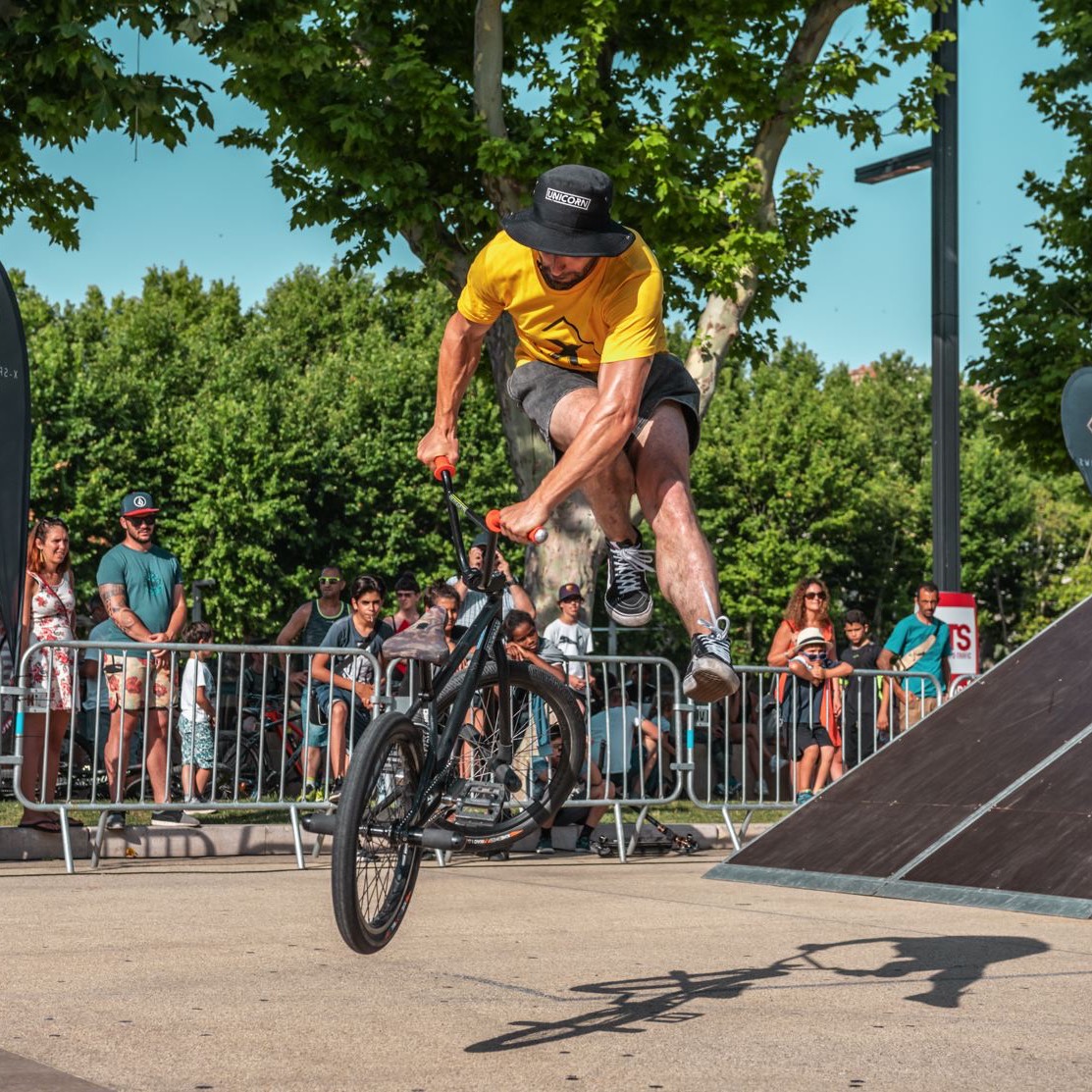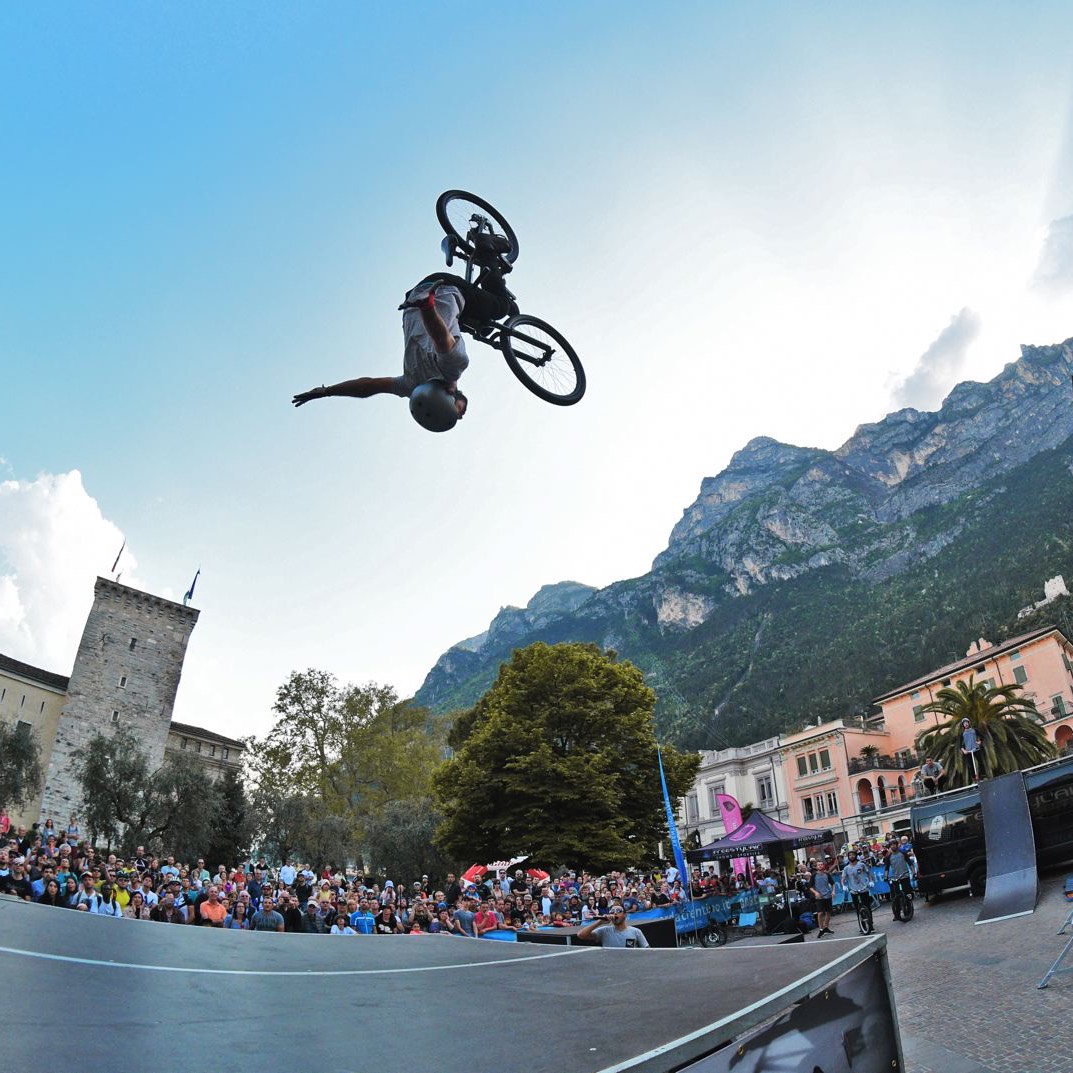Mountain bike dirt jumping, more commonly known as freestyle mountain biking, is a young sport that appeared at the end of the 90s. Inspired directly by the moves and tricks found in BMX, the major difference is the wheel size, which is 26 in. On mountain bikes, as opposed to 20 in. on BMX bikes. The first "dirt jumpers" were mountain bikers who focused on performing 360s and backflips on bicycles that were not well adapted to these moves.
That's why the bicycles' geometry quickly developed, with a lowered top tube that lets the riders have the greatest freedom of movement so they can move around the bike in mid-air. The list of components was simplified by switching to a single speed, shorter travel front suspension (100 and 120 mm), an unsuspended "hard-tail" frame, and often just one brake for the front wheel.
With these developments, freestyle mountain bikes were able to master new park features through their versatility, which led to the birth of slopestyle, a leading discipline that combines freeriding and freestyle, on terrain often found in the mountains and with new obstacles.
The first competitions appeared at the start of the 2000s. The most prestigious is still the Crankworx competition in Whistler, Canada. The first event was held in 2004 and won by the American Paul Basagoitia.
The basic rotations are backflips and 360 spins. Then other tricks were developed like the "barspin" (spinning the handlebars 360 degrees) and the "tailwhip" (whipping the back of the bike around the front wheel and fork). The aim then became combining all of these tricks in one single jump.
Development in the discipline's training in the 2010s has helped it advance enormously, particularly with the inclusion of giant air bags that help riders practice and learn tricks safely.
In the same period, the Freeride Mountain Bike Word Tour was created, grouping together all of the biggest slopestyle and dirt jumping events with the world's leading athletes in the discipline. Thus, a ranking was established each season, just like in the skiing and surfing world tours.
The arrival of this world tour expanded the sport's popularity and brought new talents coming from all over the globe to the public's attention. The most successful rider for the moment is the Canadian Brandon Semenuk.
Photo, Maxime Peythieu at the Bike Festival in 2018.




